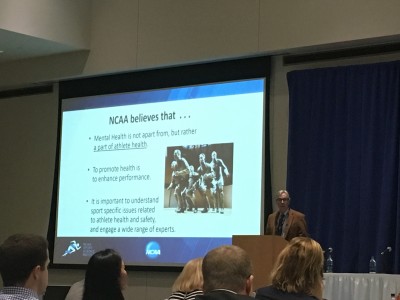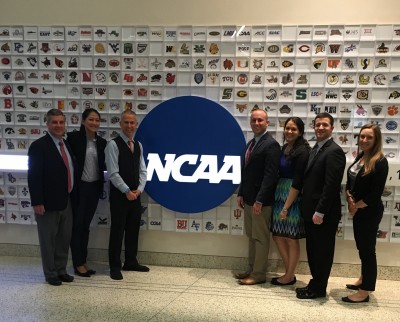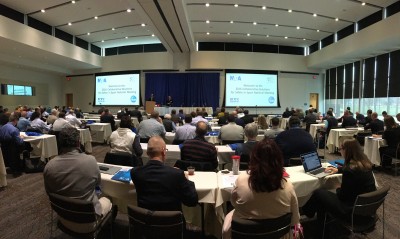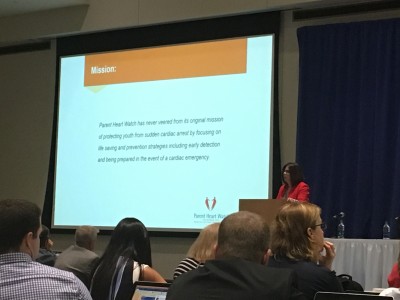By Alicia Pike, Assistant Director of Youth Sport Safety
National Athletic Trainers’ Association (NATA) President, Scott Sailor, kicked off the 2nd Collaborative Solutions for Safety in Sport (CSSS) Meeting with a powerful statement. “Nearly all deaths and serious injuries can be avoided when proper steps are taken.” A continuation of last year’s inaugural meeting in New York City, the NATA and American Medical Society for Sports Medicine (AMSSM), with assistance from the Korey Stringer Institute, brought together each state’s High School Athletic Association Executive Director and Sports Medicine Advisory Committee Chair for the second year in a row to discuss proactive policy changes and states’ progress on various health and safety initiatives at the secondary school level.

On March 22, 2016, Dr. Brian Hainline, Chief Medical Officer of the NCAA, opened the meeting with the keynote address, speaking on the challenges of change. A session followed titled, “Where are we now?” facilitated by Douglas Casa, Robert Huggins, Larry Cooper and Thomas Dompier. This session focused on progress made in policy change, athletic training coverage across the nation, proper injury prevention strategies specific to Heads-Up Football, and an overview of data from the Datalys Center for Sports Injury Research and Prevention. The meeting portion of day one concluded with small group breakout sessions, quite valuable for those in attendance, as they spoke candidly with one another about successes and barriers pertaining to sport safety policy implementation.
Day two began with a keynote address from Martha Lopez-Anderson, Chair of the Board of Directors for Parent Heart Watch. Turning tragedy into triumph, Martha shared her heartbreaking personal story that led to her involvement in this organization, and advocated for the implementation of prevention strategies for sudden cardiac arrest in the youth population, including placing AED’s in all locations, cardiac screening, and getting appropriate personnel trained in CPR/AED use. Following her keynote, a session dedicated to mental health issues in student-athletes ensued. Although not directly in the spotlight, mental health is a true problem. Dr. Brian Hainline stressed the importance of having an emergency action plan in place for mental health issues, similar to the ones implemented to manage various incidents such as cervical spine or head injuries. Alongside Dr. Hainline, John Reynolds, Dr. Cindy Chang, and Dr. Francis O’Connor also facilitated this session. From sharing success stories on the promotion of mental wellness in a school district, to discussions on the prevalence and consequences of disordered eating and performance-enhancing drug use, attendees were informed of proper strategies to take in limiting and managing mental health issues in student-athletes.
Taking a different approach this year, attendees were allowed to choose from three different breakout sessions, providing opportunities to promote discussion in small groups about personal experiences, struggles, and successes with cardiac and heat policy implementation, and employing athletic trainers in secondary schools. This created an environment of close collaboration, with states getting feedback for themselves while simultaneously helping each other. NATA President, Scott Sailor, said it best. “With your [attendees] collaborative support we will make a difference. We will save lives, reduce injuries, and create a playing environment that ensures health and safety first.” It was another incredibly successful CSSS Meeting, and we anticipate the next to result in even greater strides towards improving sport safety in the secondary school setting.


